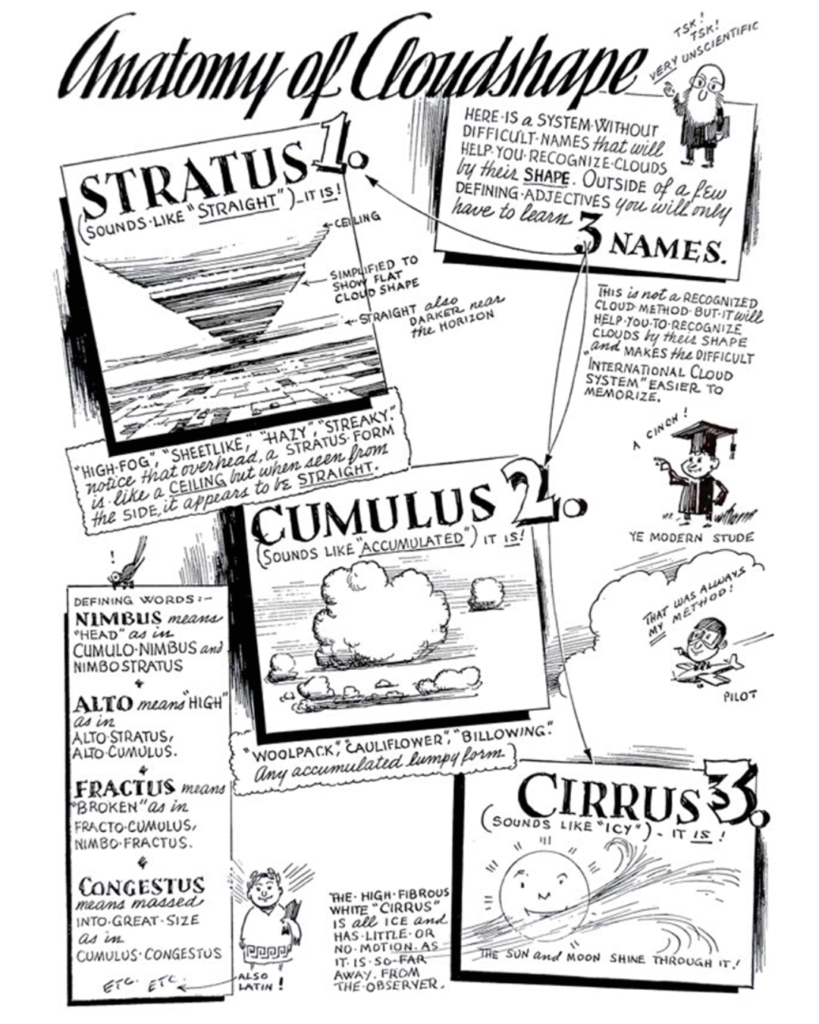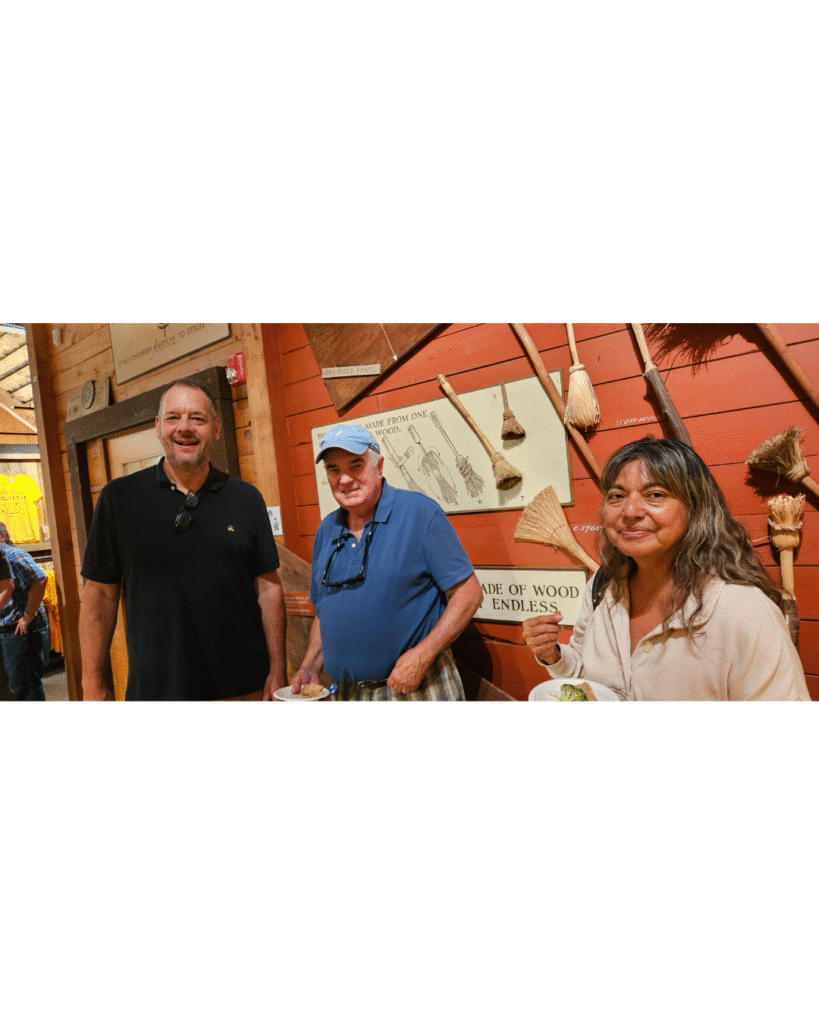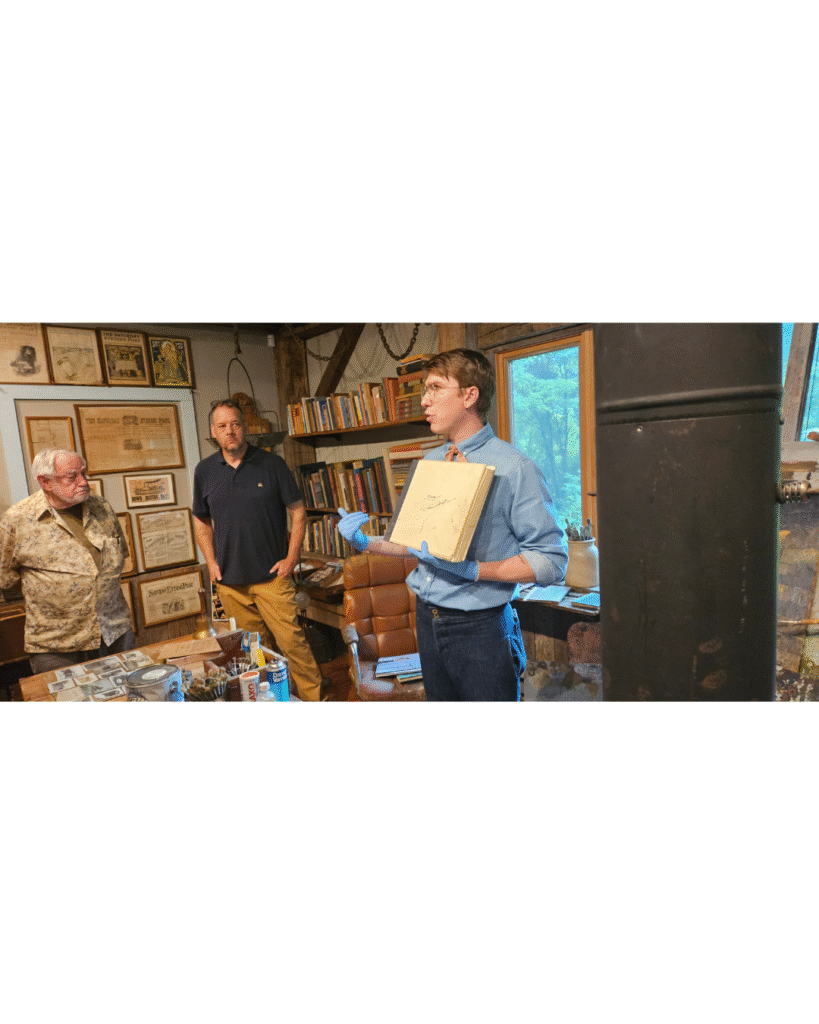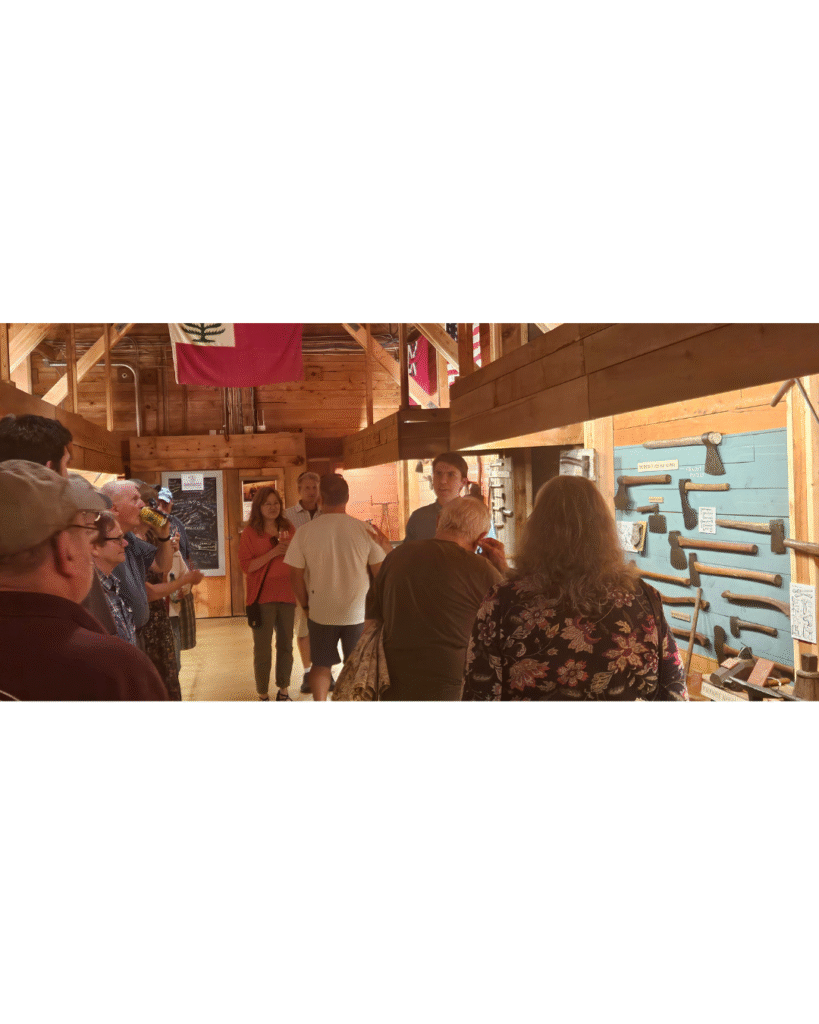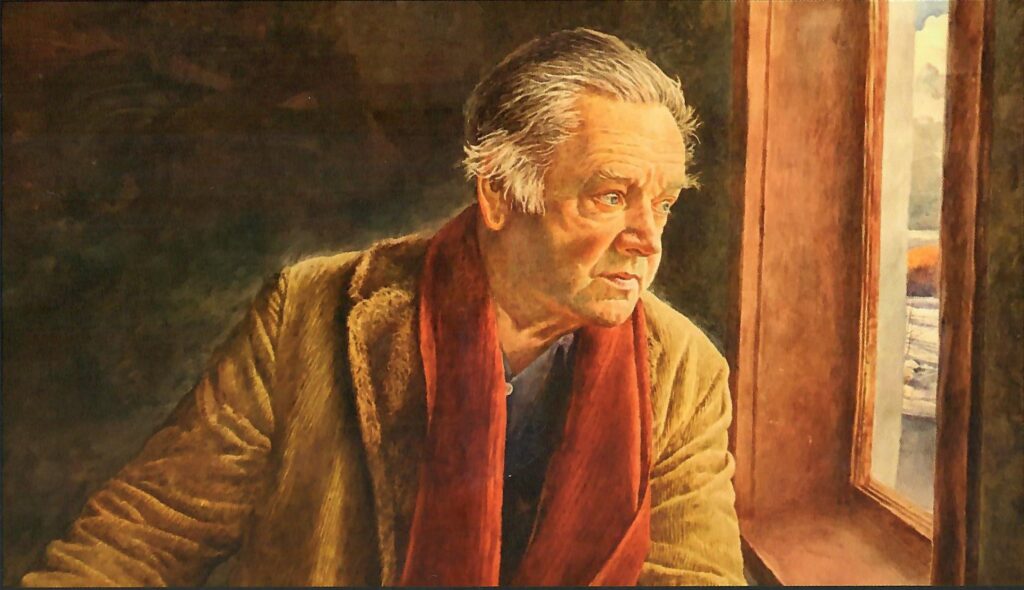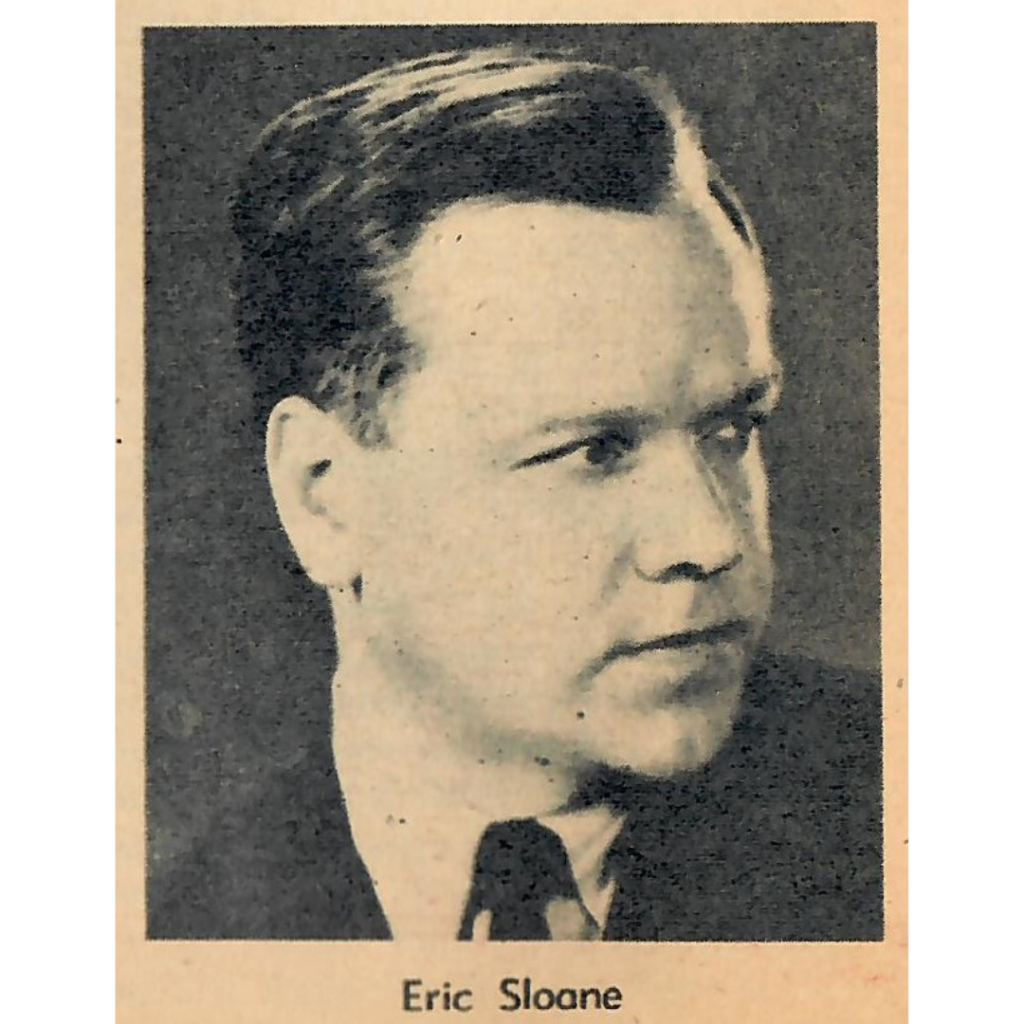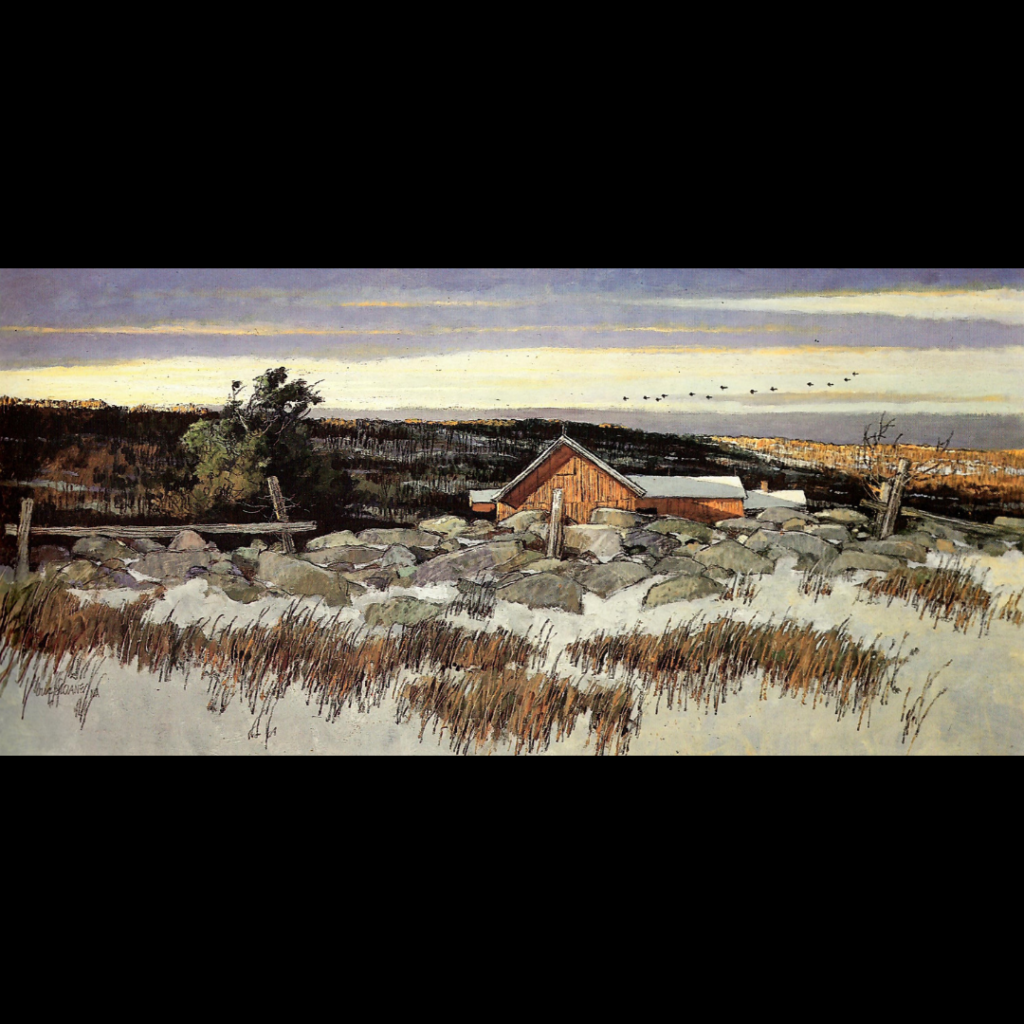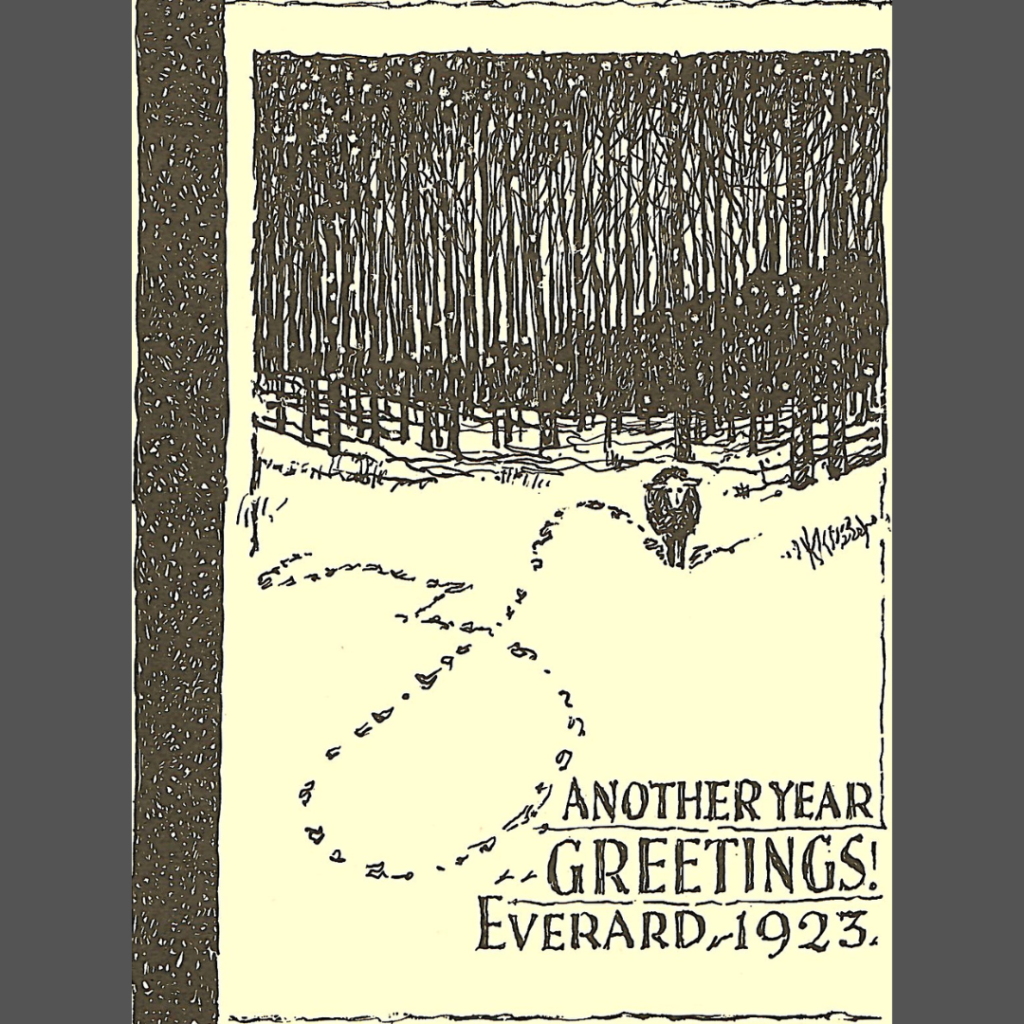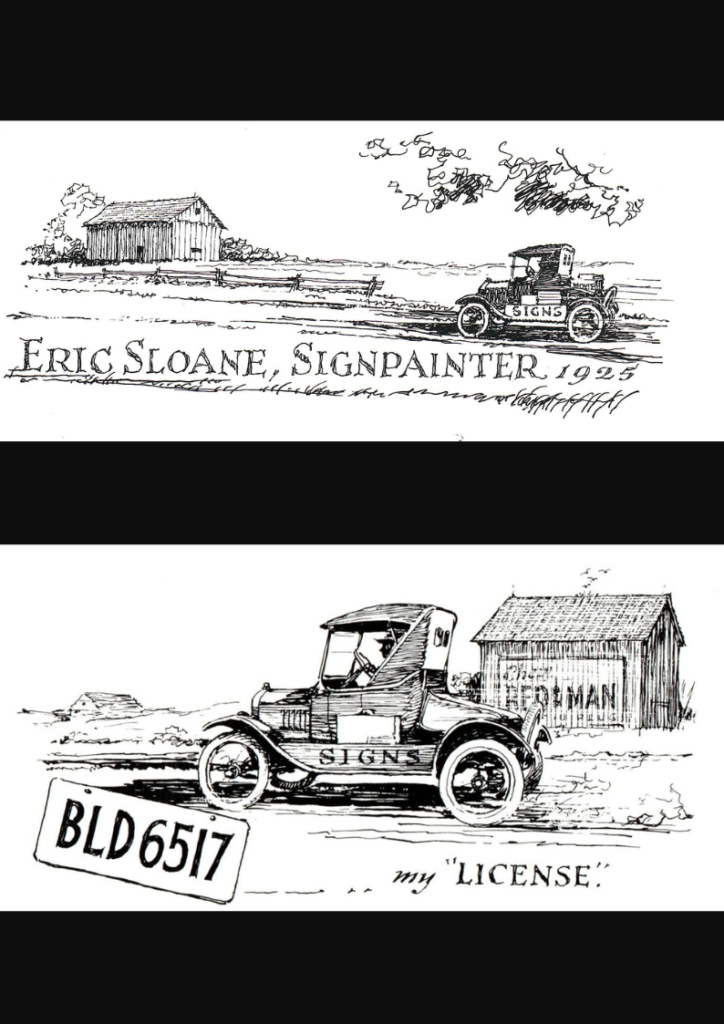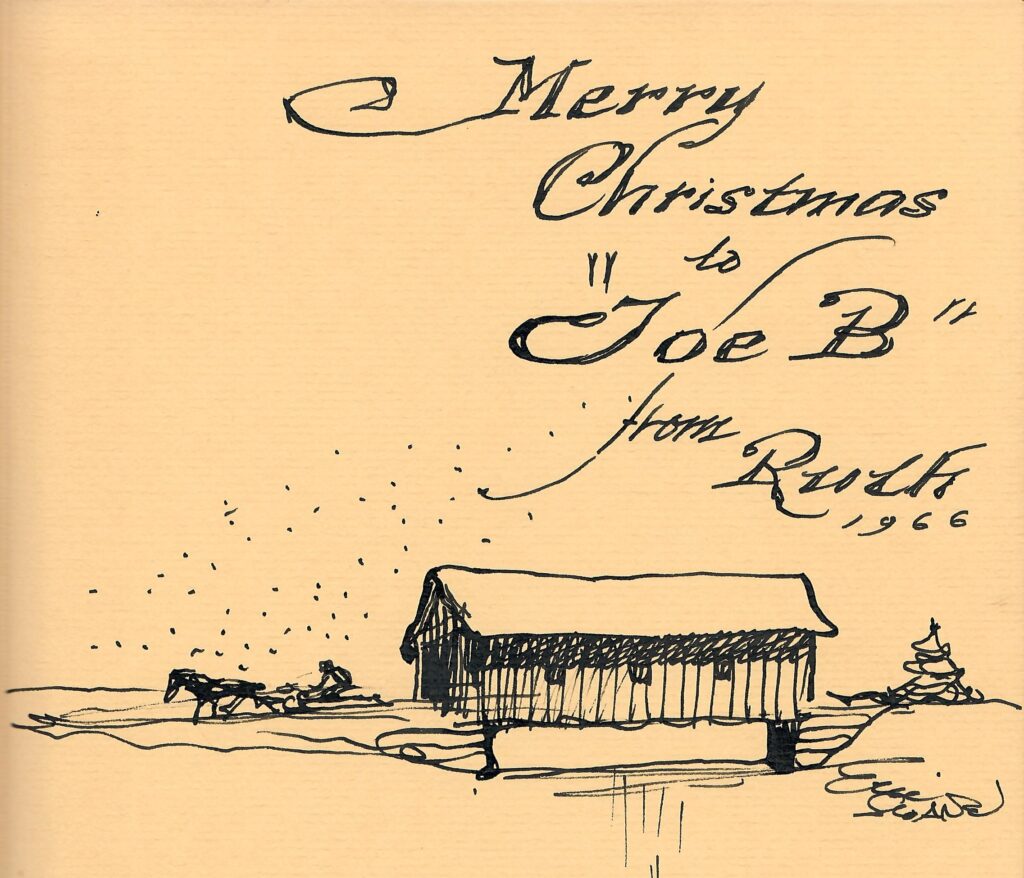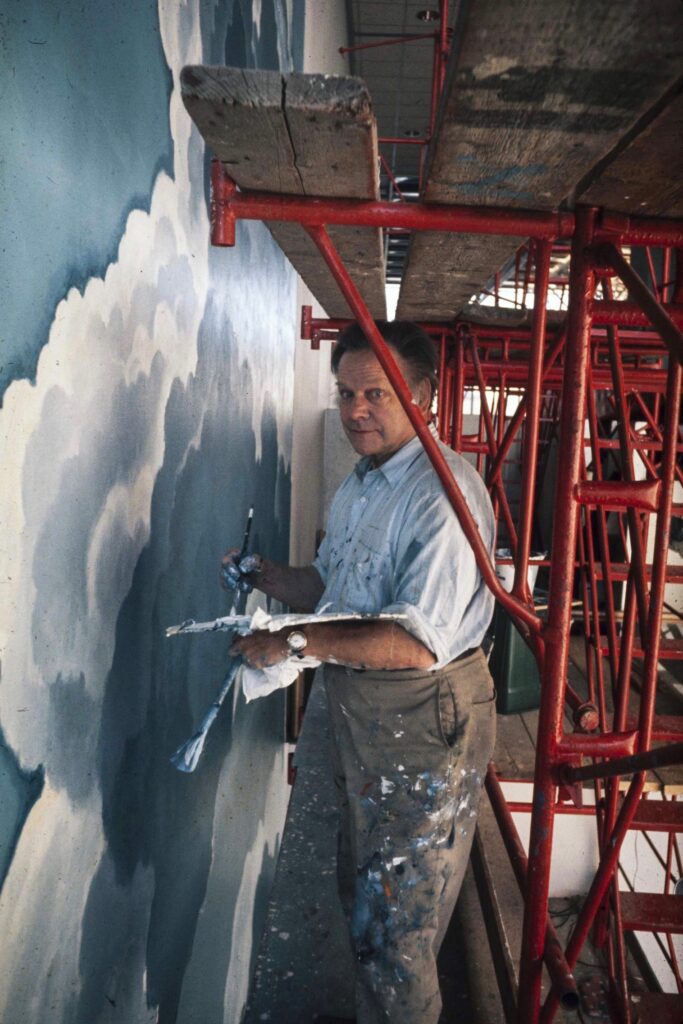
Eric Sloane (1905-1985) was an American fine artist, illustrator, and author. He is perhaps best known for his lavishly illustrated books on early American life and culture as much as for his paintings of rural America. No matter the subject matter – airplanes, the barns and stone fences of his beloved New England countryside, or the pueblos of New Mexico (for Eric painted them all) – it was always the sky and clouds that were the real subject matter for this self-taught artist. Sloane’s earliest years read like a Horatio Alger piece – born in New York City to wealthy parents who both died when Eric was young, leaving him with a million-dollar inheritance lost subsequently in the Great Depression. He flew with Wiley Post, sold his first “cloudscape” (a term he coined) to Amelia Earhart, created the Hall of Atmosphere for the American Museum of Natural History, and (at age of 71) was asked to paint a 58’ x 75’ mural for the entrance of the soon-to-be-unveiled Smithsonian Air and Space Museum in Washington, D.C. He worked incredibly hard, becoming an internationally recognized fine artist and best-selling author, all within his lifetime – much of his work devoted to encouraging people to look at the sky.
A Re-post from our Friends at the Cloud Appreciation Society: With thanks to Wil Mauch, the Cloud Appreciation Society, and The National Air and Space Museum for the image of Eric Sloane painting the Earth Flight Environment mural – Smithsonian National Air and Space Museum (NASM 9A11988).

